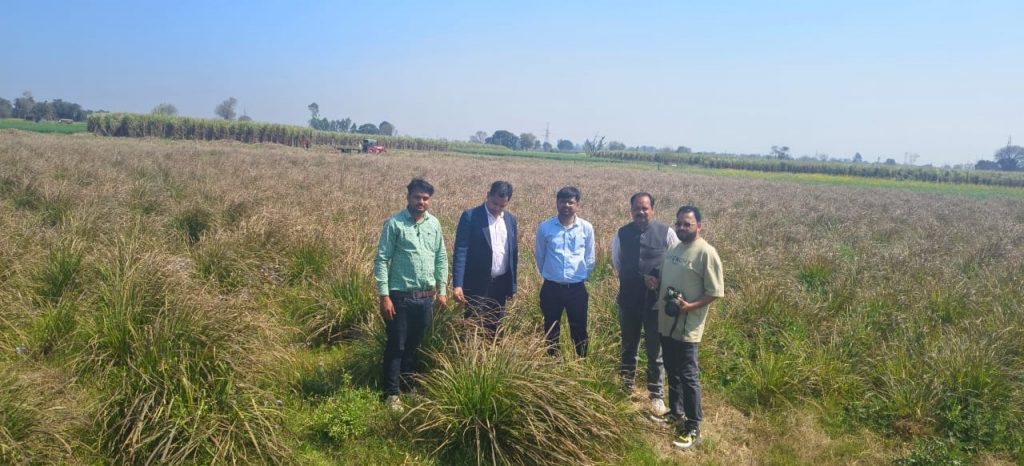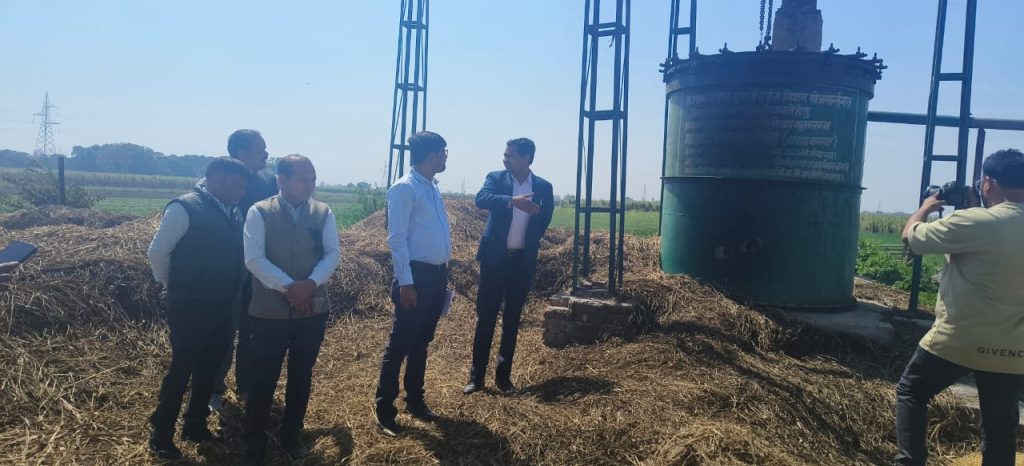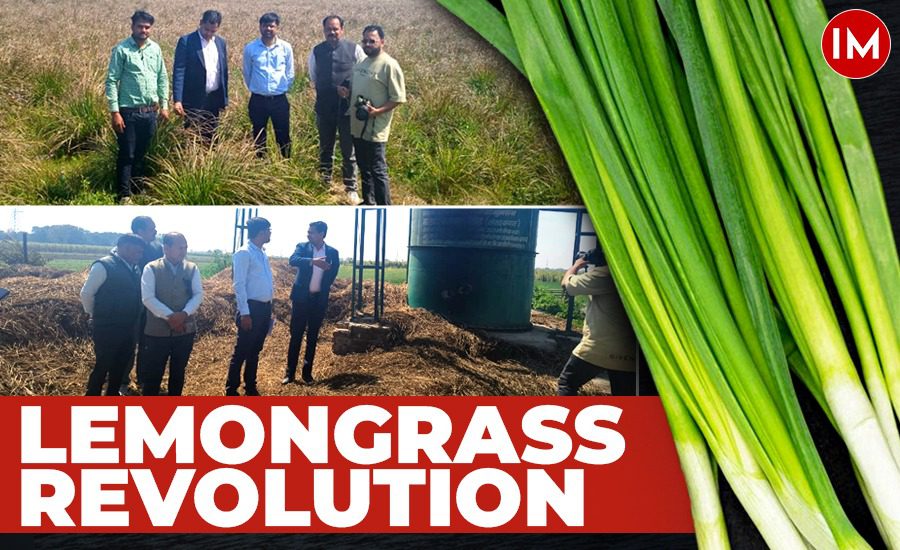In the village of Basauli, located in Baghpat district, Rishipal’s 2-hectare sugarcane farm faced numerous challenges, reflecting the struggles of many local farmers. Dependent on sugarcane cultivation, these farmers grappled with high water usage, environmental concerns, and fluctuating market rates. The tide began to turn with the intervention of the Bioenergy Board and the Department of Agriculture, which introduced a novel alternative: lemongrass cultivation.
The Turning Point
The shift was catalyzed by a small seminar organized by the Bioenergy Board and the Department of Agriculture. What started as a modest gathering soon blossomed into a larger movement, inspiring around 750 farmers to form a union dedicated to lemongrass farming. This union received technical training and a full economic grant from the BioEnergy Board, which helped ease the transition from sugarcane to lemongrass. Speaking with Indian Masterminds, Dr. Arun Kumar, District Horticulture Officer, shared about the project and its challenges in detail.

Why Lemongrass?
Several factors motivated the farmers to embrace lemongrass cultivation. Unlike sugarcane, lemongrass requires significantly less water and minimal cultural practices, reducing both the environmental impact and labor costs. The crop is resilient to natural risks and free from threats posed by wild animals. Moreover, the market for lemongrass oil is robust, with prices reaching around Rs 1,000 per liter, making it a highly lucrative option.
Financially, the benefits were clear. “While sugarcane farming barely broke even, often resulting in net profits of just Rs 50,000 per acre, lemongrass offered net profits of Rs 1.5 to 2 lakh per acre annually,” Dr. Arun shared. This stark contrast provided a compelling reason for farmers to pivot towards lemongrass.
Implementation and Impact
Training played a crucial role in this transition. Although no extensive campaigns were initially launched, departmental guidance and peer support proved sufficient for farmers to adopt lemongrass cultivation. This shift had profound social and economic impacts:
Increased Income: Farmers experienced a significant boost in their earnings, with income increasing by Rs 2.5 to 3.0 lakh per hectare.
Community Involvement: The formation of a union fostered mutual support and collaboration among farmers.
Economic Growth: The area under lemongrass cultivation expanded to 10 hectares, benefiting 750 farmers.
Challenges and Opportunities
Despite these successes, challenges remain. The primary issue is the shortage of distillation units necessary for extracting lemongrass oil. Currently, only a few units exist, often owned by wealthier farmers who can afford the investment. Many smaller farmers are unable to finance their distillation units, which cost around Rs 3 to 4 lakh each.

Furthermore, while lemongrass oil prices were high initially, they have seen some decline, affecting profitability. Farmers also face marketing challenges, needing better access to buyers and more consistent market rates.
The journey wasn’t without its challenges, but the success highlighted the potential of lemongrass as a viable alternative. As the farming community continues to adapt and innovate, the lessons learned from Bhagpat will undoubtedly inspire further agricultural transformations across the region.






























